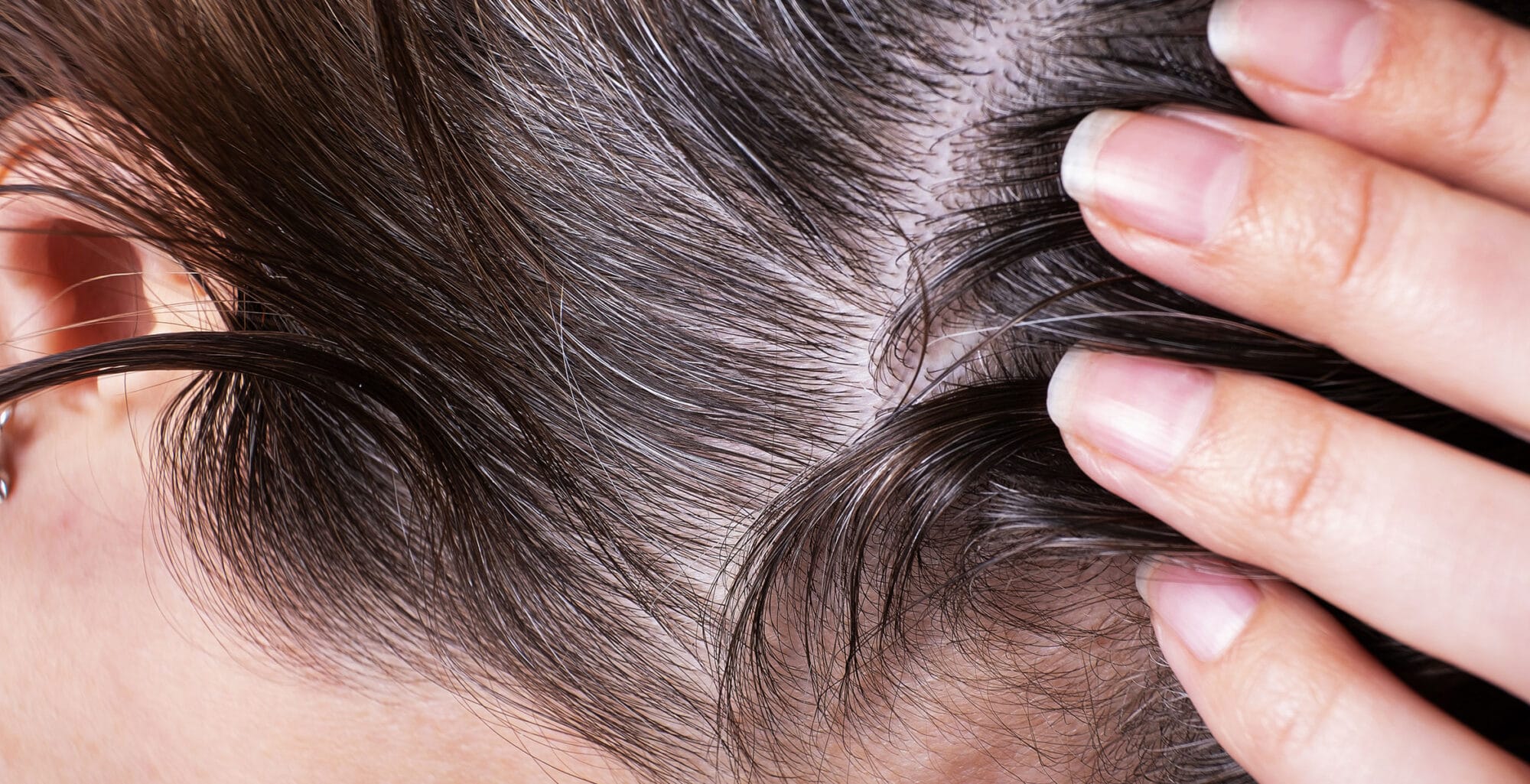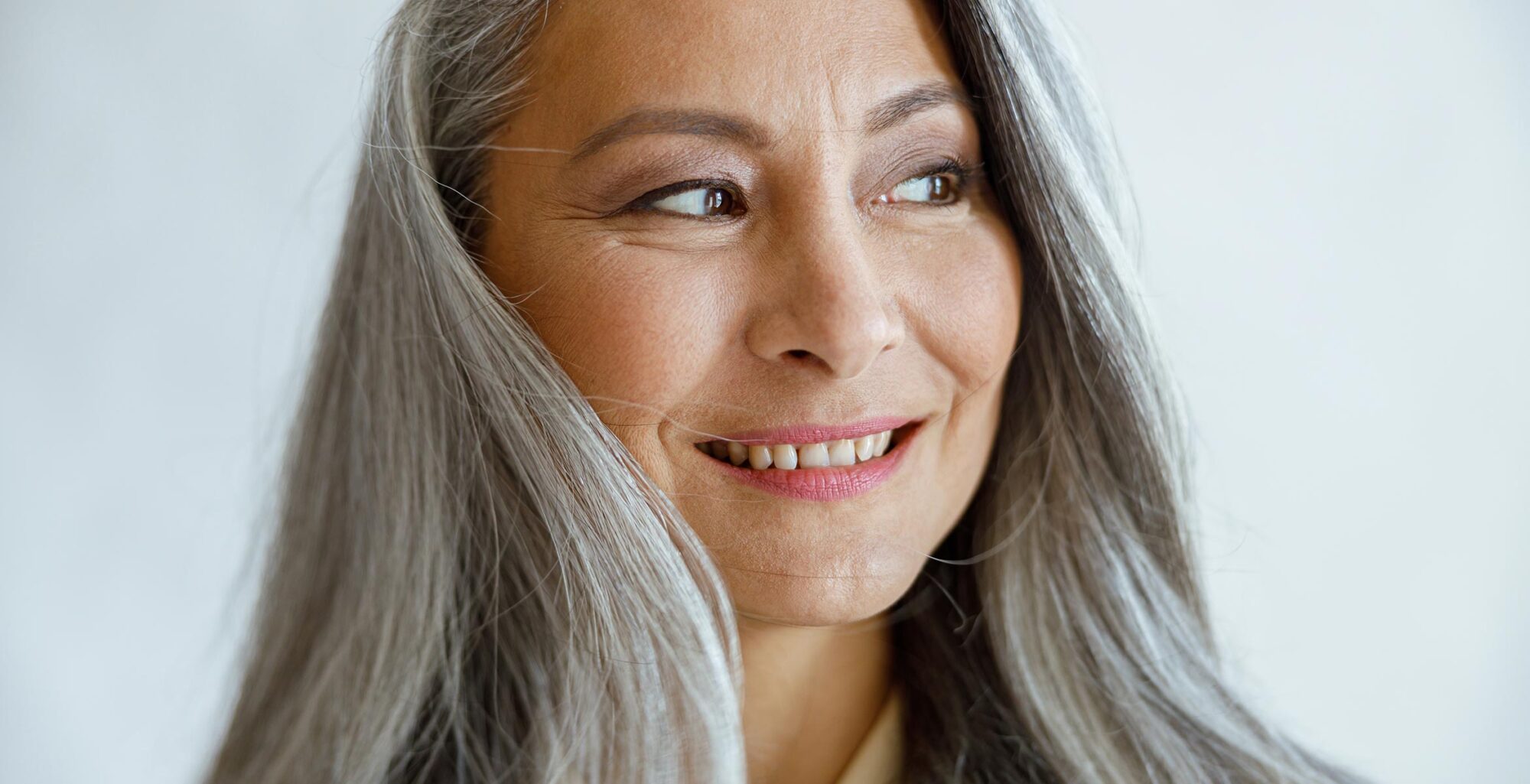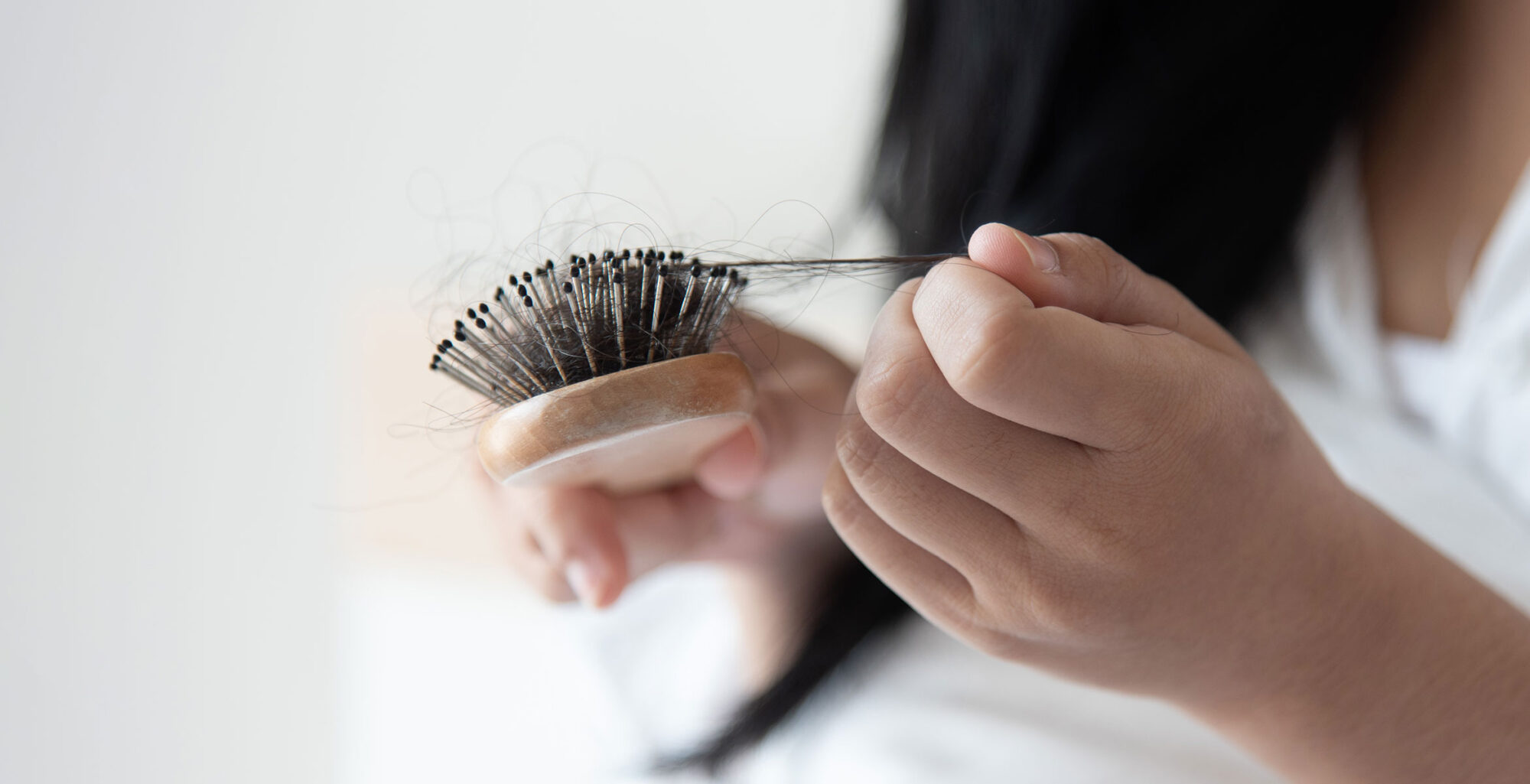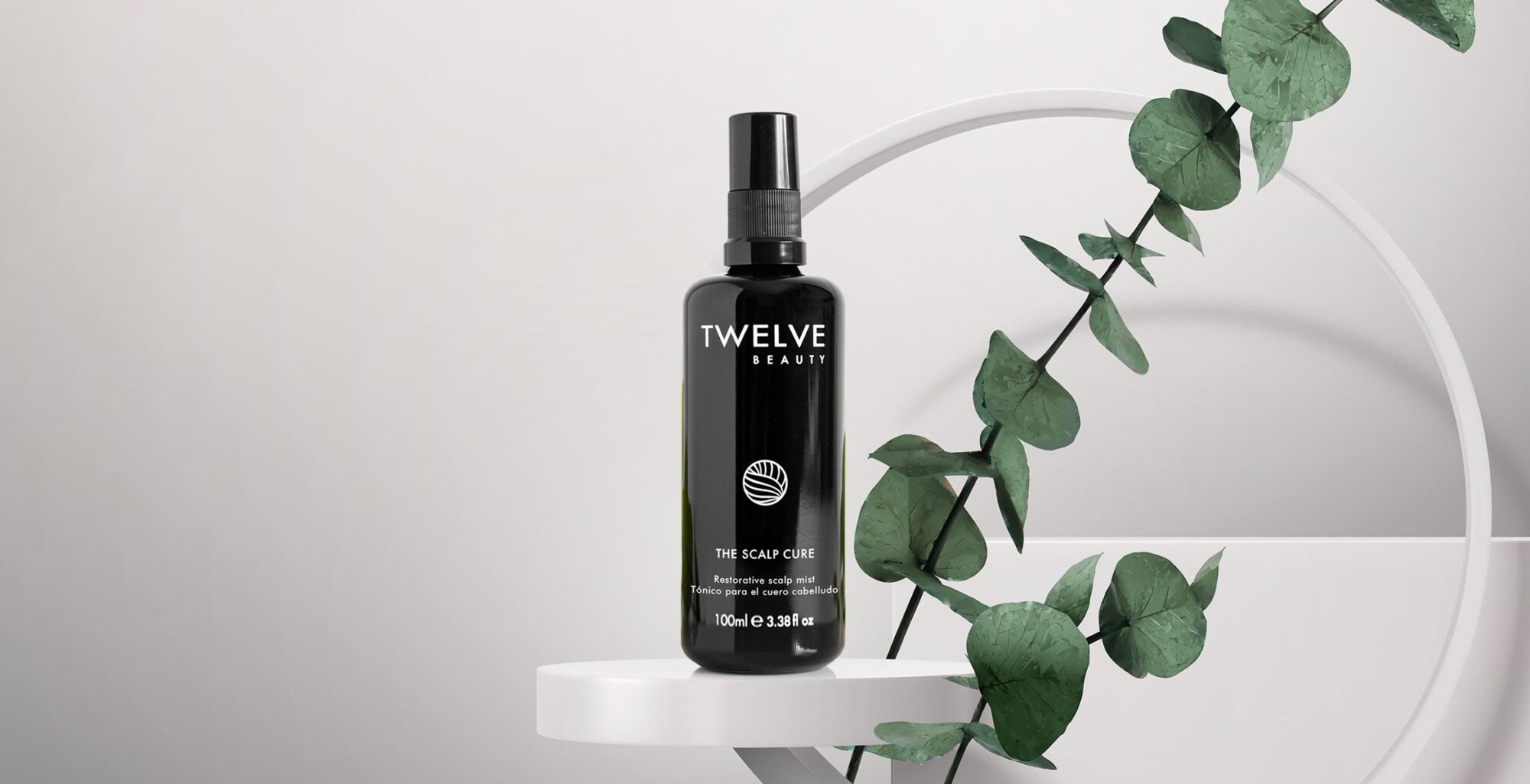Understanding Perimenopause Hair Changes and How to Combat Them

Entering perimenopause can feel like a whirlwind of changes, both physical and emotional. Among these, shifts in your hair’s health and appearance might catch you by surprise. Thinning strands, increased dryness, and even unexpected hair loss can leave you feeling less confident. But understanding the “why” behind these perimenopause hair changes, and learning how to care for your locks during this transition, can help you regain control. This guide will explore everything you need to know about navigating these changes with the right care, treatments, and products.
What Are Perimenopause Hair Changes?
As a female body enters perimenopause and moves through into menopause, it often experiences noticeable differences in their hair. Studies show the hormonal shifts related to this stage, especially the decrease in oestrogen, can lead to various alterations in hair texture, thickness, and vitality. Let’s explore some of the most frequent perimenopause hair changes:
- Hair Thinning: One of the most common changes is thinning hair. Oestrogen plays a significant role in keeping hair healthy and dense. As oestrogen levels drop, hair may begin to thin and lose volume, creating less body and bounce.
- Hair Loss: Many females experience hair loss during perimenopause and menopause. This is partly due to a reduction in oestrogen and an increase in androgens, leading to the shedding of more hair than usual. While some hair loss is normal, perimenopause hair loss can be more noticeable and distressing.
- Dry, Brittle Hair: Another common change is that hair may become dry and more prone to breakage. With fewer natural oils produced by the scalp, the hair loses moisture and becomes more fragile.
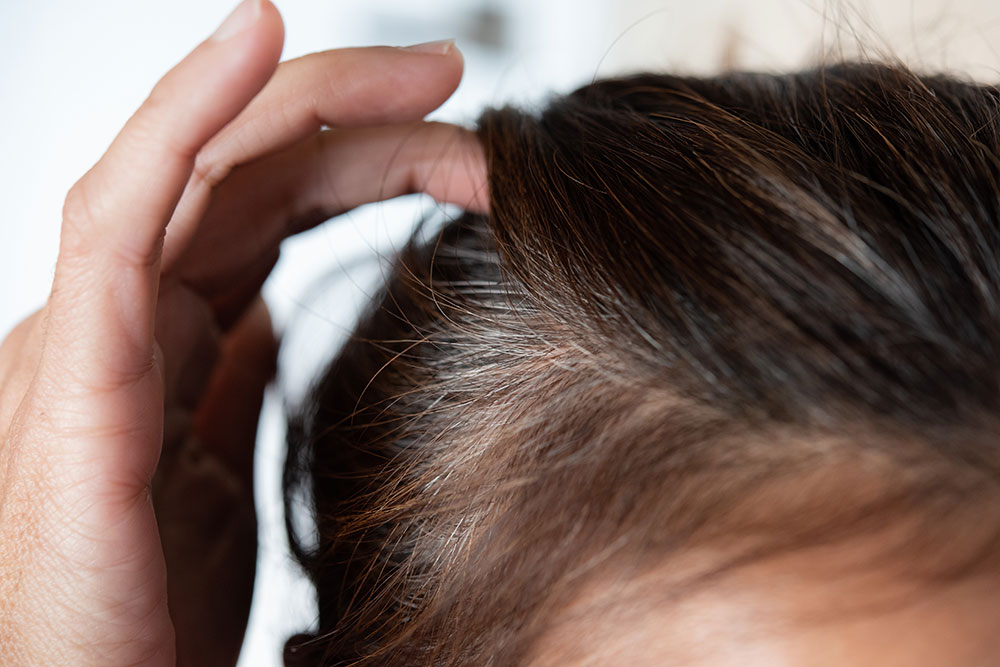
- Greying: The decrease in oestrogen also contributes to the loss of hair pigment, resulting in more grey or white hair.
- Changes in Hair Texture: Perimenopausal hair can become either more frizzy or, in some cases, straighter. Hormonal fluctuations can affect the shape and texture of hair follicles, leading to noticeable differences.
- Scalp Dryness: A dry scalp often accompanies dry hair, as oil production slows down. This can lead to itchiness and irritation, which may further exacerbate hair concerns.
Oestrogen Decline: The Root Cause of Perimenopause Hair Loss
As previously mentioned, the primary cause behind these perimenopause hair changes is the decrease in oestrogen levels, which directly impacts the hair growth cycle. Oestrogen helps hair stay in the anagen (growth) phase for longer periods. Without sufficient oestrogen, hair moves into the resting and shedding phases more quickly. Additionally, rising levels of androgens (male hormones) can lead to further hair thinning, as these hormones can shrink hair follicles.
Why So Many Females Experience Hair Loss During Perimenopause and Beyond
Hair loss is a common issue many females face throughout perimenopause, menopause, and postmenopause. Studies show that a high percentage of females experience some degree of androgenetic alopecia (female pattern hair loss seen in the top centre area of the head) during these stages, driven by the hormonal shifts detailed above. While losing 100 to 150 hairs a day is considered normal, the hormonal imbalance during perimenopause can accelerate this process, making hair loss more noticeable. This condition often becomes more pronounced as women transition into menopause and postmenopause.
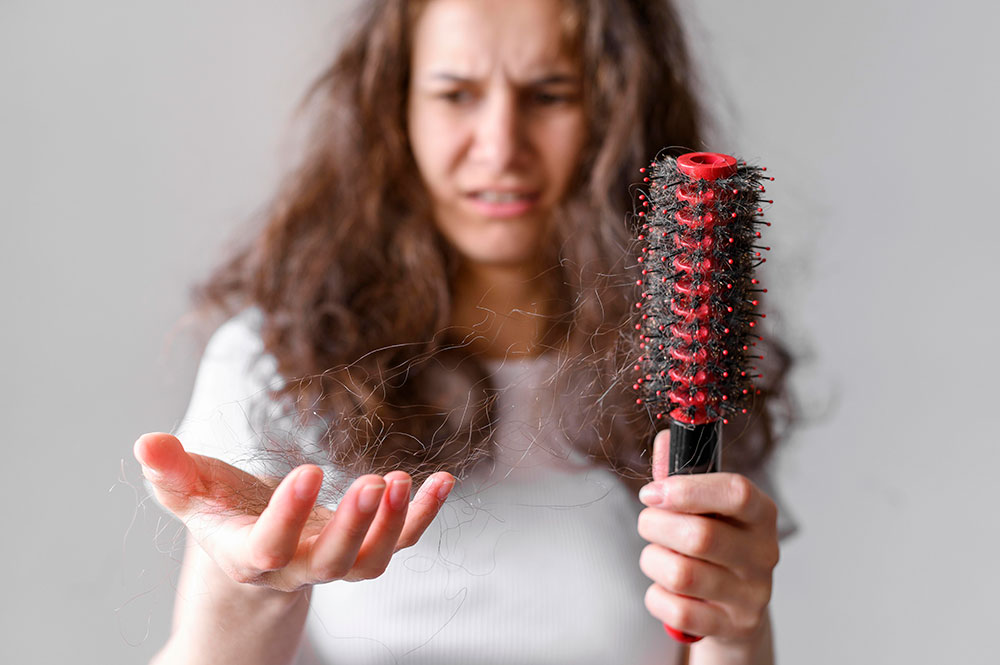
Beyond the Physical
The physical changes to hair during perimenopause and menopause don’t just affect appearance—they can also have emotional and psychological impacts:
- Loss of Confidence: Thinning hair or noticeable hair loss can lead to a drop in self-esteem. Many females report feeling less confident as they grapple with hair that no longer feels or looks the same.
- Reduced Quality of Life: Struggling with hair problems during this life stage can affect how you feel about yourself and can add to the stress of going through other menopausal symptoms.
Effective Hair Care Tips to Combat Perimenopause Hair Changes
Thankfully, there are various ways to manage these perimenopause hair changes and maintain healthy, beautiful hair:
Hydration Is Key
Keeping your hair hydrated is essential during perimenopause and menopause. Dryness and breakage can be mitigated by using products rich in natural hydrating ingredients. We recommend using formulations with hyaluronic acid and hydrolysed jojoba esters. These ingredients work wonders by:
- Boosting moisture: Hydrolysed jojoba esters act like human sebum, replenishing the moisture lost during perimenopause and preventing hair from becoming dry and weak. Hyaluronic acid locks in key moisture, reducing frizz and flayaways.
- Soothing the scalp: Hydrolysed jojoba esters also help soothe an irritated scalp, which can become more sensitive during menopause. You can find these ingredients in both our shampoo and conditioner to revitalise your hair and scalp.
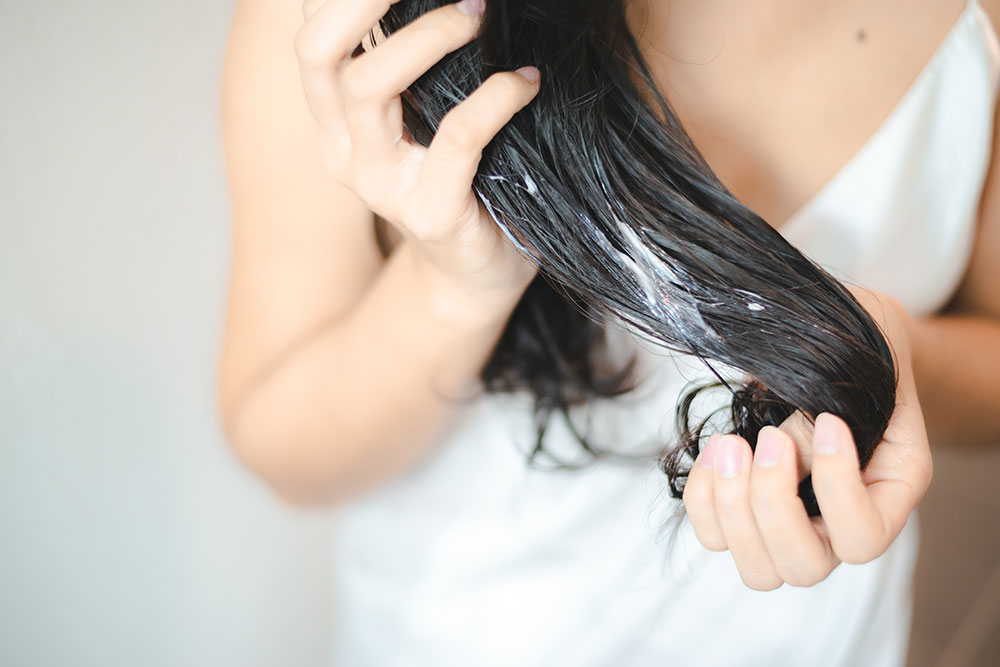
Perimenopause Hair Loss Treatments
Tackling perimenopause hair loss requires targeted treatments. For those experiencing more severe hair thinning, products containing corosolic acid are highly effective. This powerful ingredient, found in The Scalp Cure, works in several ways:
- It inhibits the conversion of testosterone into DHT (dihydrotestosterone), the hormone linked to hair loss.
- It reduces the production of proteins like FGF-5 that trigger hair shedding.
- It boosts hair cell production and encourages the growth of stronger, thicker hair by stimulating proteins such as FGF-7 and BMP-2, which regulate hair growth and thickness.
Regular use of treatments like these can help minimise hair loss in perimenopause and menopause while promoting the growth of healthier, more resilient hair.
Use Gentle Hair Products
During perimenopause, it’s essential to opt for moisturising and mild hair products that won’t strip the hair of its natural oils. Consider the following tips:
- Wash less frequently: Washing your hair too often can exacerbate dryness. Aim to wash only when necessary and always follow up with a deep conditioner.
- Avoid harsh treatments: Minimise exposure to heat styling tools and hair dyes that can further damage your hair. If you must style with heat, always use a heat protectant.

General Lifestyle Recommendations
In addition to using the right products, some lifestyle changes can help support hair health during perimenopause:
- Eat a balanced diet: Nutrient-rich foods support overall hair health. Vitamins like biotin can strengthen both hair and nails, while foods rich in omega-3 fatty acids promote scalp health.
- Exercise regularly: Physical activity improves blood circulation, which can stimulate hair follicles and support hair growth.
- Manage stress: It’s been said before but we’ll say it again – Stress is a significant contributor to hair loss. Practice relaxation techniques such as meditation or yoga to keep stress levels in check.
- Get enough sleep: Sleep is crucial for cell regeneration, including the cells responsible for hair growth.
A Last Word…
Perimenopause and menopause inevitably bring changes to hair, from thinning and hair loss to dryness and textural shifts. Understanding the root causes behind these changes can empower you to take control of your hair health during this life stage. Remember, while perimenopause hair changes are a natural part of ageing, with the right care and products, you can maintain healthy, vibrant hair no matter what.
